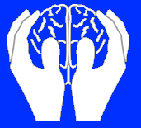Публикуваме тази статия с разрешението на Mind Alive Inc.
The following excerpt is from the Appendices of "The Rediscovery of Audio Visual Entrainment Technology" by Dave Siever, C.E.T. copyright 1997
The Effect of Audio-Visual Entrainment (AVE) on Hypertension - July 2001
Wendy Mullen, Kathy Berg & Dave Siever, CET
Introduction
Hypertension is a life-threatening condition that affects over 60 million North American adults. A variety of drugs are used to treat it, primarily by causing vascular dilatation or decreasing sympathetic arousal. These drugs produce a myriad of troubling side effects and yet cost the average American about $800 per year for medications. Lifestyle changes, particularly improvements in diet, reduce systolic pressure by 5 points (mmHg) and diastolic pressure by 2 points (mmHg). Most single hypertension drugs reduce systolic pressure by 11 points and diastolic pressure by 8.5 points. (Figure 1). Combining various hypertension drugs decreases systolic blood pressure by an average of 18 points and diastolic by 12 points, with increased medication related side effects.
Method
All of the participants (n=28) in this 8-week study received "placebo", sub-delta frequency (0.5 - 1 Hz) stimulation for one month followed by one month of alpha frequency (7.8 - 10 Hz) stimulation. All participants were taking hypertensive drugs during the study. Blood pressure measurements were recorded weekly. Both the Beck Depression Inventory (BDI) and State Trait Anxiety Inventory (STAI) were used in the analysis.
Results
Alpha frequency audio-visual entrainment (AVE) has shown strong effectiveness in reducing depression and anxiety. However, the group was neither depressed (Beck=7.4) nor anxious (STAI=34) so the benefits of alpha AVE were uncertain. Surprisingly, the sub-delta AVE had marked effects on blood pressure reducing the systolic 20 points (166 - 146) and the diastolic 15 points (96 - 81), see Figure 1. (Interestingly, sub-delta AVE has also produced unexpectedly good improvements in many people with fibromyalgia). It is possible that the sub-delta AVE used in this study directly impacted physiological functions rather than psychological ones.
The participants also showed an unexpected marked increase of 14 points (146 - 160) in systolic pressure and a seven point (81 - 88) increase in diastolic pressure simply from increasing the AVE frequency to alpha during the fifth week of the study. Because there was essentially no change in anxiety nor depression, this unusual increase in blood pressure may indicate a well established conditioned response, known as white-coat syndrome, where they increase their blood pressure in accordance with novel (state arousing) experiences.
Figure 1

Conclusion
Sub-delta stimulation reduced high blood pressure more than when using a combination of hypertension meds. Alpha AVE was not as effective as sub-delta AVE partly because alpha AVE was introduced in the second month of the study and some hypertension had already been reduced. Also, alpha AVE is particularly effective in treating anxiety and depression, which were not factors in this study.
Changes in Anxiety Affecting Heart Variability - Dave Siever, C.E.T.
Heart rate variability (HRV) is the measurement of the rhythm of the heart as affected by breathing. Spectral analysis of the heart rhythm is used to indicate the degree to which the sympathetic and parasympathetic nervous systems are aroused and affecting the natural rhythm of the heart.
I have also examined people with considerable anxiety and depression. The HRV in these people is generally erratic and shows high autonomic (sympathetic and parasympathetic) activity. AVE presented at alpha frequencies has an immediate calming affect, producing sharp reductions in autonomic activity. The left side panel of Figure 2 shows the HRV data of a 28 year old woman with acute anxiety. The spectral inset shows high autonomic activity. After about two minutes of practicing 10 second breathing cycles she developed an anxiety reaction. She was immediately given 7.8 Hz AVE and continued to practice 10 second breathing cycles. The data was taken five minutes following the onset of AVE (right hand side). The spectral inset shows considerable reduction in autonomic activity.
The left side panel of Figure 3 shows the HRV data of a 40 year old woman with acute anxiety relating to childhood problems and a marital separation. The spectral inset shows high autonomic activity. After about two minutes of practicing 10 second breathing cycles she developed an anxiety reaction. She was immediately given 7.8 Hz AVE and continued to practice 10 second breathing cycles. The data was taken five minutes following the onset of AVE (right hand side). The spectral inset shows considerable reduction in autonomic activity.
Figure 2

Figure 3









